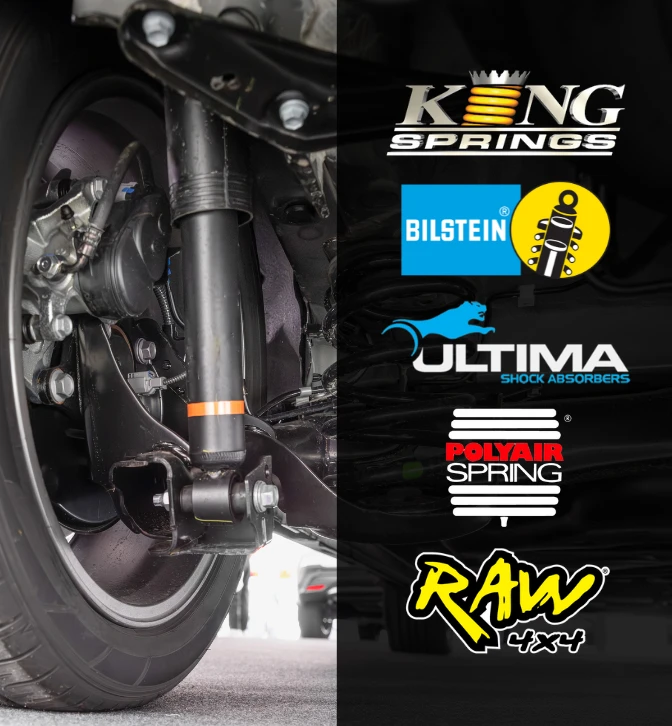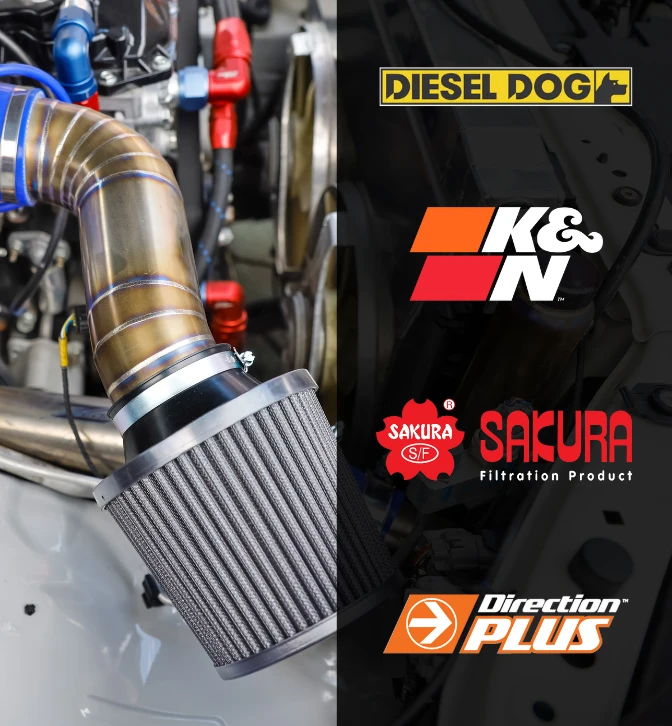-
Exhaust
- Back
- Exhaust
- Performance Exhaust Systems
- Standard Replacement Exhaust Systems
-
Exhaust Accessories
- Exhaust Bolts, Nuts & Studs
- Clamps
- Collectors
- Exhaust Reducers & Couplers
- Exhaust Tips
- Flange Plates
- Exhaust Flex Bellows
- Exhaust Brackets & Hanger Rods
- Gaskets
- Heat Tape
- Mandrel Bends
- O2 Sensors & Exhaust Temperature Sensor Accessories
- Paint
- Muffler & Exhaust Mounting Brackets
- Tube
- X & Y Pipes
- All Exhaust Accessories Products
- Catalytic Converters
- DPF Filters
- Exhaust Extractors / Headers
- Universal Mufflers & Hotdog Mufflers
- All Exhaust Products
![Exhaust]()
- Suspension
- Performance
- Towing
- Filters
- Truck
- On Sale
- About Us
- Blog
- Contact Us
Common Exhaust System Issues and Troubleshooting Tips
Date Posted: 15 November 2023
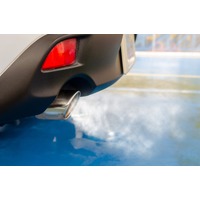
From lowering your vehicle’s fuel efficiency to potentially emitting hazardous gases, a faulty exhaust system can cause a whole host of problems. That’s why it’s important to know how to identify common exhaust system issues and how to troubleshoot them.
Which is precisely what we’ll discuss in this article. We will explain how to diagnose problems, how to fix them yourself or when to go to a mechanic. But before we get to that, let’s start with an overview of the exhaust system and its components.
How the Exhaust System Works and its Components
The exhaust system consists of several key components, each with a specific role in ensuring your vehicle operates efficiently and safely:
- Exhaust Manifold: The exhaust system begins with the exhaust manifold, which collects the exhaust gases from the engine cylinders. These gases contain harmful by-products of the combustion process, including carbon monoxide, nitrogen oxides, and unburned hydrocarbons.
- Exhaust Pipes: The gases then travel through the exhaust pipes, connecting the manifold to the muffler. Along the way, they pass through the catalytic converter, which reduces harmful emissions by converting them into less toxic substances.
- Muffler: After passing through the catalytic converter, the gases enter the muffler. This component contains chambers and baffles that reduce noise levels and control gas flow. It also directs the exhaust gases away from the vehicle and prevents them from entering the cabin.
- Oxygen Sensors: These sensors monitor oxygen levels in exhaust gases, providing feedback to the engine control unit for an optimal fuel-air mixture.
- Catalytic Converter: Converts toxic gases into less harmful substances to reduce emissions.
- Hangers and Mounts: Securely hold the exhaust system, ensuring proper alignment and preventing damage from excessive movement.
- Heat Shield: It protects the vehicle's undercarriage from heat generated by the exhaust system.
- Gaskets and Seals: Ensure a tight seal between exhaust components, preventing leaks and minimizing noise.
- Tailpipe: The gases exit the vehicle through the tailpipe, located at the rear, directing the exhaust away from the vehicle and reducing noise and vibrations.
- Exhaust Tips: These are purely decorative, so not all vehicles have them. Their purpose is to enhance the appearance of the exhaust system.
In short and as you likely know, the exhaust system efficiently removes harmful gases and minimises noise. Regular inspections and maintenance of all of these exhaust system components are essential to ensure proper functioning and prevent issues.
The Role of the Exhaust System in Vehicle Performance

The exhaust system serves multiple functions, including collecting and eliminating harmful byproducts of the combustion process. Carbon monoxide, nitrogen oxides, and unburned hydrocarbons produced during combustion must be safely expelled to protect the driver and passengers.
Additionally, the exhaust system helps maintain the proper air-fuel mixture in the combustion chamber. By regulating backpressure, it ensures optimal engine performance. A malfunctioning exhaust system can disrupt this balance, leading to reduced engine performance and increased fuel consumption.
The system also plays a role in noise reduction. The muffler and other components create a quieter driving experience by controlling gas flow and sound waves. Proper maintenance of the exhaust system is crucial for optimal vehicle performance.
Identifying Exhaust System Problems
Recognizing potential problems with your vehicle's exhaust system is crucial for maintenance and safety, and typically doesn’t require special training. Pay attention to unusual noises, conduct visual inspections, be aware of exhaust odours, and note poor engine performance.
Unusual noises are a common sign of exhaust system issues. While some engine noise is normal, certain sounds require attention. A loud, roaring noise may indicate an exhaust leak while rattling or hissing sounds can suggest a loose heat shield or broken hanger.
Then, regular visual inspections are vital and the easiest way to spot potential issues. Look for visible cracks, holes, or rust on exhaust components. Also, check for loose or broken hangers that can affect the exhaust system's alignment.
Strange exhaust odours can be another indicator of issues. Strong, unpleasant smells like sulphur or rotten eggs may point to a faulty catalytic converter. The smell of burning coolant could indicate a leak in the exhaust manifold.
Additionally, as we’ve mentioned, exhaust system problems can affect engine performance. Blockages, such as a clogged catalytic converter or restricted exhaust pipe, can lead to decreased power, difficulties starting, and reduced fuel efficiency. If you notice your car is not working as well as a month or two ago or using more fuel, it could be due to a faulty exhaust system.
Common Exhaust System Issues
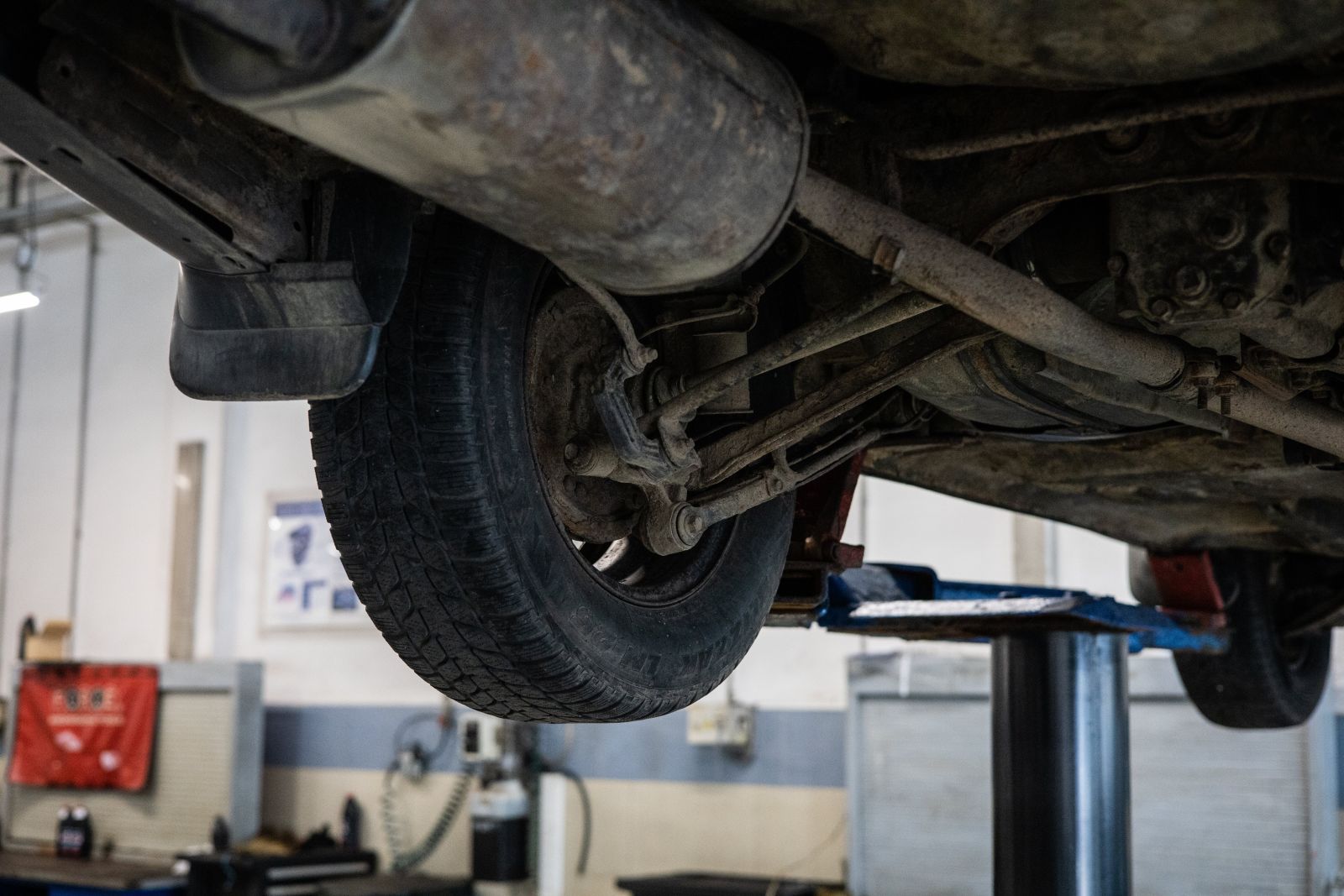
Now let’s discuss some of the most common exhaust system issues:
- Exhaust Leaks: Exhaust leaks can significantly impact performance and safety. They may result from physical damage, such as a broken or detached exhaust pipe, or corrosion due to exposure to moisture and road salt. Symptoms of exhaust leaks include increased engine noise, reduced fuel efficiency, and unusual smells. They can pose safety risks due to toxic fumes, making prompt attention essential.
- Catalytic Converter Problems: Catalytic converter issues can lead to decreased engine performance and fuel efficiency. A malfunctioning converter may cause a noticeable increase in emissions. Problems can stem from carbon deposits, low-quality fuel, or physical damage. It’s best to consult a professional mechanic to diagnose and address catalytic converter problems.
- Oxygen Sensor Malfunctions: Faulty oxygen sensors can decrease fuel efficiency, increase emissions, and reduce engine performance. If your check engine light is illuminated, or you experience these symptoms, consult a mechanic to diagnose and address the issue.
- Deteriorated Mufflers and Resonators: Deterioration of mufflers and resonators is not uncommon and can result in increased engine noise, reduced fuel efficiency, and a rougher engine idle. Environmental factors such as moisture and road salt can contribute to their deterioration, so if you live in an area with high humidity, this issue is not unexpected. High-quality replacements may be necessary if the damage is extensive.
- Broken Hangers: Broken hangers can affect the alignment of your exhaust system, causing your exhaust pipes to hang too low or move excessively. This can lead to rattling or banging noises. Promptly address broken hangers to avoid safety risks and causing additional damage.
DIY Solutions for Minor Exhaust Problems
For minor exhaust issues, you can consider DIY solutions before visiting an auto repair shop. These can save time and money and even provide a sense of accomplishment. Here are three common minor problems and how to address them at home:
- Patching Small Exhaust Leaks: Use specialized exhaust repair tape or high-temperature epoxy to patch small holes or cracks. Clean the area around the leak, apply the tape or epoxy following the manufacturer's instructions, and run the engine to ensure a proper seal.
- Replacing Damaged Hangers or Mounts: Replace broken hangers or mounts with a jack, jack stands, a wrench, and new hangers or mounts from an auto parts store. Lift the vehicle safely, remove old hangers or mounts, and install the new ones.
- Cleaning and Maintaining Exhaust Components: Remove carbon deposits and rust from exhaust components using a wire brush, steel wool, or specialized exhaust cleaner. Regularly check for loose heat shields and signs of physical damage.
However, always remember to prioritize safety and follow manufacturer instructions when working on your vehicle.
When to Consult a Mechanic
While DIY solutions can address minor exhaust problems, consult a professional mechanic for more significant issues, when you're unsure about the extent of damage, or even if you simply wish to upgrade your exhaust system. It’s best to seek their expertise when experiencing:
- Sudden decreases in fuel efficiency or increased engine noise
- Exhaust smells inside the cabin
- Visible signs of exhaust issues, such as black smoke, blue smoke, or unusual exhaust pipe colours
- An illuminated check engine light
Professional mechanics have the knowledge, tools, and access to quality parts needed to make accurate repairs. Their expertise can prevent further damage and costly repairs. Unless you have the expertise, paying a mechanic to fix your exhaust systems issues can cost you less in the long run than if you were to try to fix it yourself.
Maintaining the Optimal Performance of Vehicle
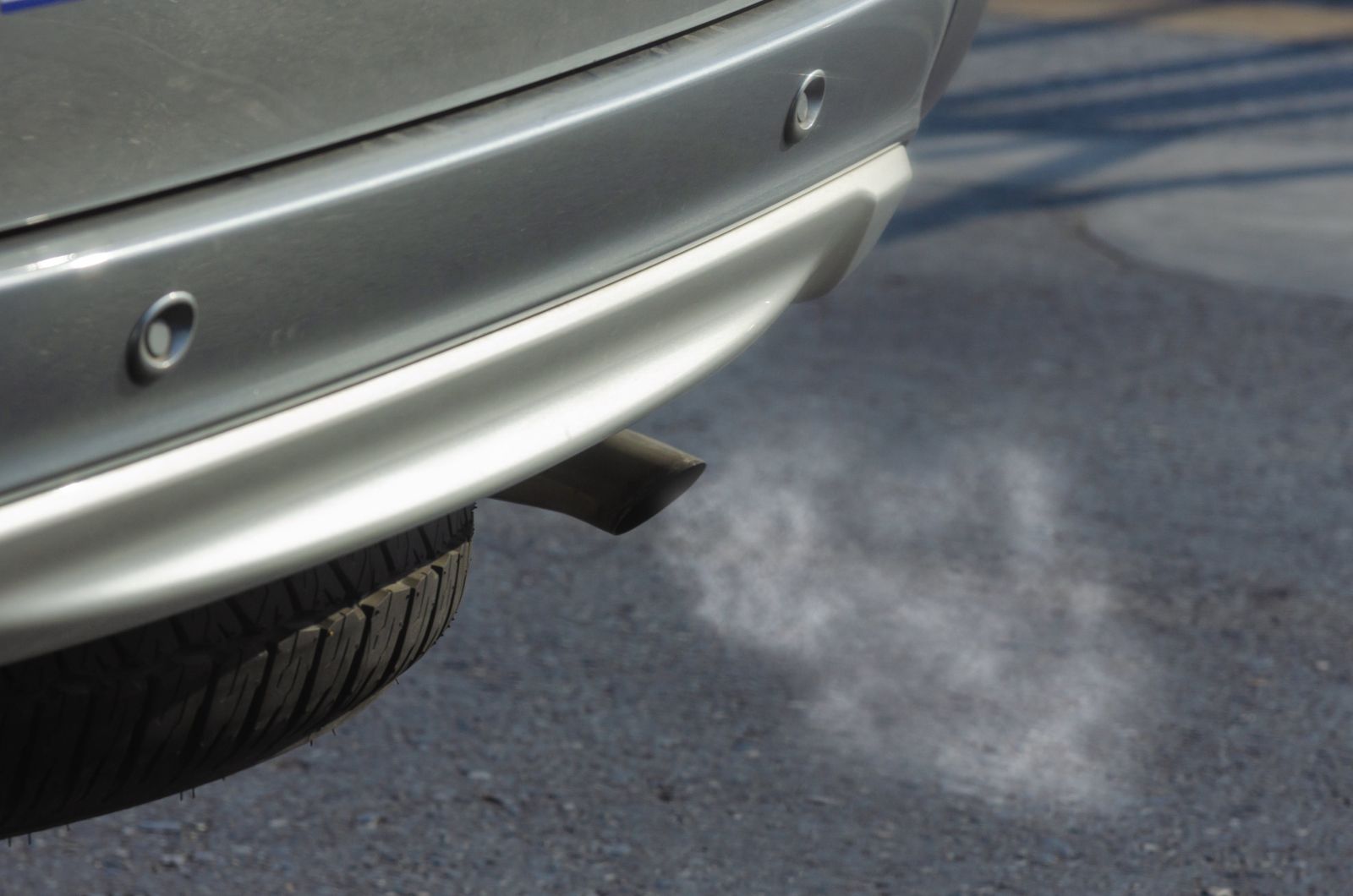
Understanding your vehicle's exhaust system, common issues, and when to consult a mechanic is essential for maintaining optimal performance and safety. Regular maintenance and prompt attention to problems will help ensure your vehicle's exhaust system functions efficiently and extends its lifespan.
But sometimes, your only option is to change your exhaust system components. If you are in that situation, you may consider performance and aftermarket parts to improve the functioning of your vehicle.
In case you are going down that route, consider Perform-Ex Auto. We carry performance replacement parts for all types of exhaust systems. Check out our selection of exhaust parts and you’ll find everything you need – from DIY tools and accessories to standard replacement exhausts.
You can choose between multiple payment options and stay safe in the knowledge that all of our parts are under warranty. We ship Australia-wide, but if you have any questions about how the process works or wish to learn more about the parts we sell, feel free to contact us.
Leave a comment



